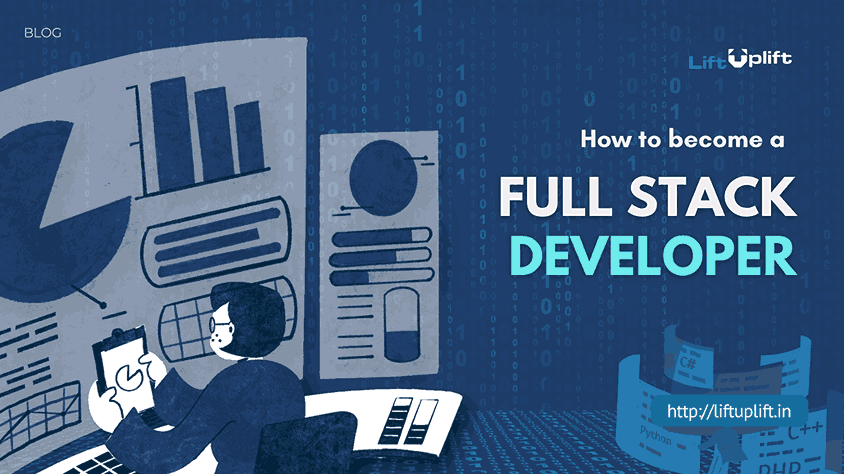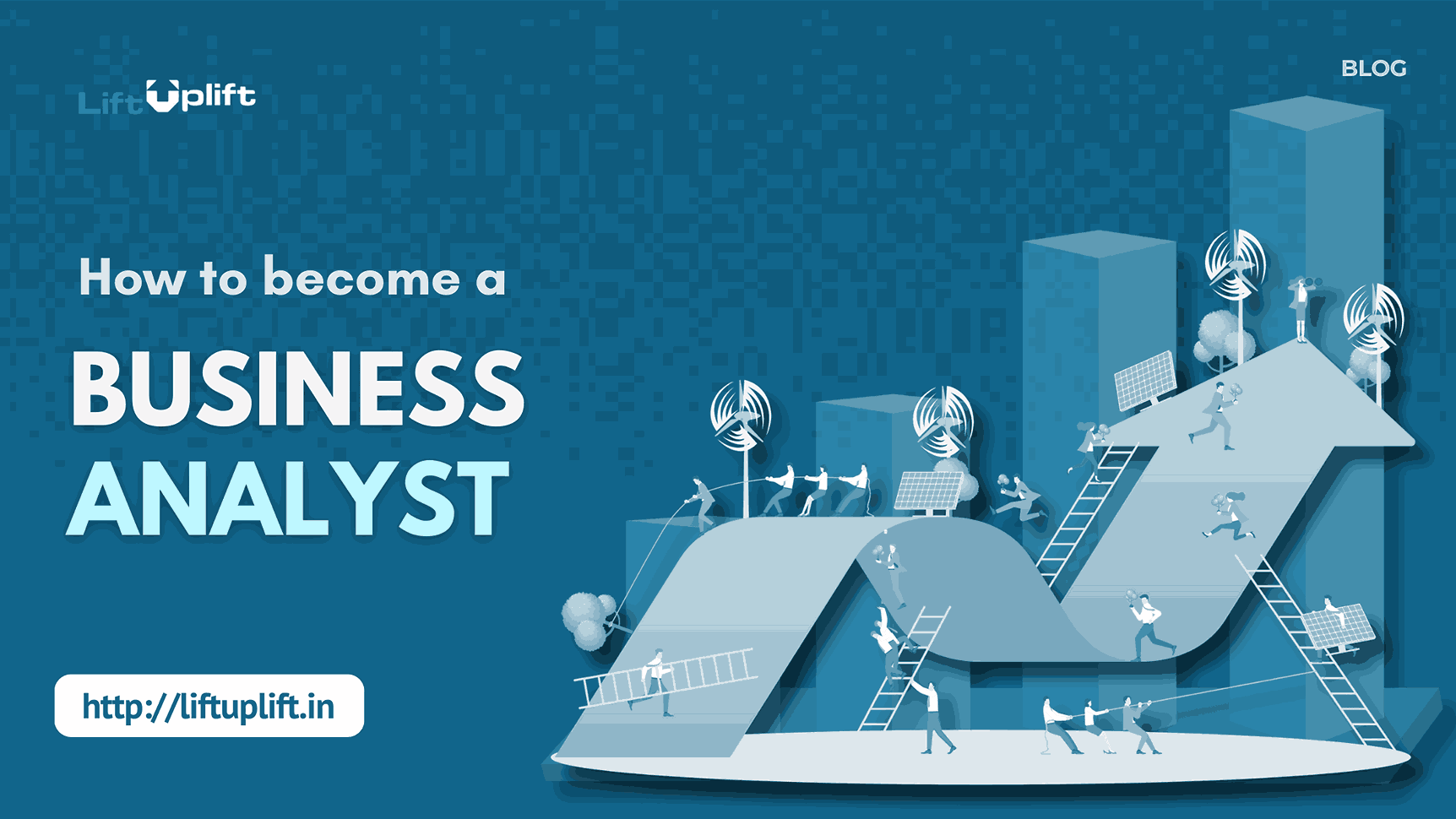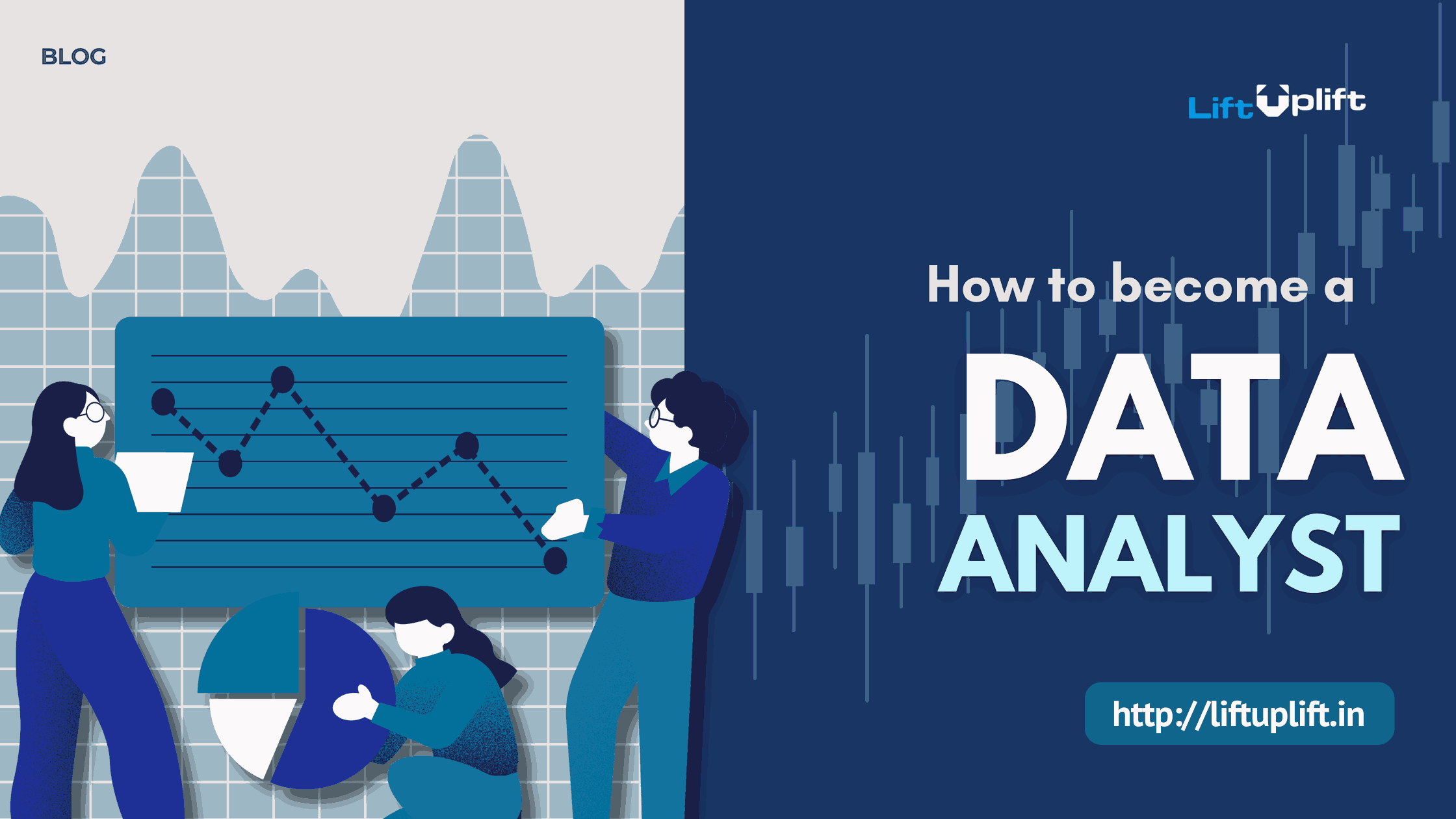Ever wondered how a single developer can handle the whole web development process? Are you curious about the building’s front end and back end of websites? That’s where a full-stack developer comes in! Full Stack Development is one of the most sought-after Career paths these days, especially in India, in this technology-driven world. From designing user-friendly interfaces to managing databases, a full-stack programmer is known for doing it all!
This guide tears down how to become a full-stack developer, dealing with everything from the basics of necessary skills to the right learning paths. Whether you’re a complete newbie or looking to advance your development career, we have got something for you!
Who is a Full Stack Developer?
Before we dive into the process of becoming one, let us answer what is a Full Stack Developer.
A Full-Stack Developer works on the front end that users interact with and the back end, that is the server side. That means handling the full range of tasks needed to develop a fully functional web application.
Also referred to as Full Stack Software Developers, they can build, test, and maintain everything that makes them very versatile.
Well, now that you understand who a full-stack developer is, let us move on to how you could be one.
Step-by-Step Guide on how to become a Full-Stack Developer
Being a full-stack dev does not sound like something easy. However, breaking down the process into steps makes it much easier. Here’s a step-by-step guide to help you to become a full-stack dev.
Step 1: Learn the Basics of Web Development
Start with learning full stack developer syllabus which includes HTML, CSS, and JavaScript. These are the building blocks for your front-end development, and this is your first step toward becoming a full-stack programmer.
You have understood enough of the basics, and you can now proceed with learning front-end frameworks.
Step 2: Mastering Front-End Development
Popular front-end libraries and frameworks are React, Angular, or Vue.js. These will help you develop web applications that are dynamic and responsive.
You have now become comfortable with the front end, and it is now time to get your hands dirty with the back-end technologies.
Step 3: Mastering Back-End Development
Learn back-end languages like Node.js, Python, Ruby, or PHP. These help in the implementation of server-side logic and database management.
With back-end knowledge in hand, you need to learn how to manage databases.
Step 4: Familiarise with databases
Learn SQL (MySQL, PostgreSQL) and NoSQL (MongoDB) and how to use them. This will enable you to really store, manage, and retrieve data efficiently.
Knowing front-end, back-end, and databases is great, but now it’s time to tie everything together.
Step 5: Learn Version Control with Git
Any full-stack developer should know how to handle his own code using Git. Learn how to push, pull, merge, and collaborate with other developers on projects.
Once you start feeling good, then use your knowledge in real projects.
Step 6: Projects in the portfolio for a full-stack developer
Real practical know-how is also equally important. Probably some good starting points will be small projects: development of your website or taking part in open-source projects.
Once you have projects to share, you’re off and running, but that’s just the start of things and upskilling.
Step 7: Continue to Learn and Refresh Your Skills
Full-stack developers must have continuous learning as the technology keeps on updating themselves. New frameworks, libraries, and best practices should be known constantly.
How to Learn Full Stack Development
How to Learn Full Stack Development Effectively- Here are a few quick ways by which this can be done:
- Online Courses: Platforms like Udemy, Coursera, and edX are offering great courses on full-stack development.
- Join Bootcamps: A lot of institutes offer a bootcamp that takes classes on full stack developer skills, which provide hands-on.
- Practice on Platforms: Great website spaces for practice include GitHub, FreeCodeCamp, and LeetCode.
Now that you know where to learn, let’s have a look at what skills and qualities you’ll need.
Skills and Qualifications
Full-stack development is a wide field, and having it all will give one the upper hand in success. This is what must not miss out on:
- HTML/CSS: To build the structure and design of web pages
- JavaScript: For adding interactivity and logic on the front end
- Front End Frameworks: using React, Angular, or Vue.js
- Backend Languages: working with Node.js, Python, Ruby, or PHP
- Databases: basic understanding of MySQL, PostgreSQL, MongoDB.
- Version Control: Git and GitHub
- APIs: knowing RESTful services and APIs.
With this in place, let’s move on and talk about some basic requirements for becoming a full-stack developer.
Requirements to Be a Full-Stack Developer
You probably would be asking what it would take to start a full-stack development career. Here are the basic requirements:
- Educational Background: A degree in computer science or a related field can be helpful but is not mandatory.
- Practical Experience: Building projects and showcasing them in your portfolio is crucial.
- Certifications: Consider getting certified on multiple web development technologies to help you gain credibility.
- Communication Skills: Development teams thrive on collaboration. Thus, they are expected to be capable of voicing out their ideas.
After the requirements have been covered, let’s discuss the challenges as well as rewards in this field.
Full Stack Developer Salary and Career Growth
One of the most attractive features of being a full-stack programmer is huge earning potential. Full-stack developers in India can earn between Rs 6 lakh and Rs 15 lakh annually, depending on experience and skills.
| Job Title | Average Salary (INR) | Salary Range (INR) |
| Full Stack Developer | ₹ 8.8 LPA | ₹ 1.8 LPA – ₹ 16.0 LPA |
| Junior Full Stack Developer | ₹ 9.1 LPA | ₹ 3.4 LPA – ₹ 18.0 LPA |
| Senior Full Stack Developer | ₹ 14.0 LPA | ₹ 6.5 LPA – ₹ 40.0 LPA |
With each experience and lesson, you become more valuable in the marketplace. In this field, the room for career progression is fantastic because most companies are searching for versatile developers who are capable of assuming responsibility for multiple aspects of a project.
Wrapping up
Becoming a full-stack developer does not seem easy; however, with a well-laid plan, commitment, and hands-on practice, it is achievable. From the mastery of front-end and back-end technologies up to working with databases, APIs, and version control, you will be fine to have robust web applications developed. The skills and qualifications listed above, combined with constant learning, will be a passport to achieving your goal.
Full-stack programmers are highly demanded for the designing of small projects as well as being part of large-scale system development. Remember, all begins with the start from the basics, formation of a portfolio, and getting even more adaptable to new technologies. With dedication and passion, surely your career as a full stack dev will reap what you sow and is going to be rich and challenging.
Frequently Asked Questions:
What does a Full Stack Developer do?
A Full Stack Developer, therefore, would represent all the development of the front end and back end, eventually constituting the complete web application.
Is Full Stack Development hard to learn?
It is not easy, but it is doable with persistence and continuous practice in front-end and back-end and also in database technologies.
How long does it take to become a Full Stack Developer?
It may take 6-12 months of dedicated learning to reach proficiency at full stack development depending on the extent of prior experience and practice.




